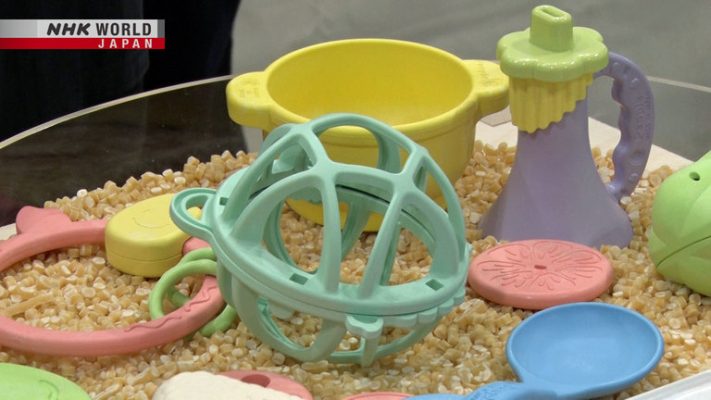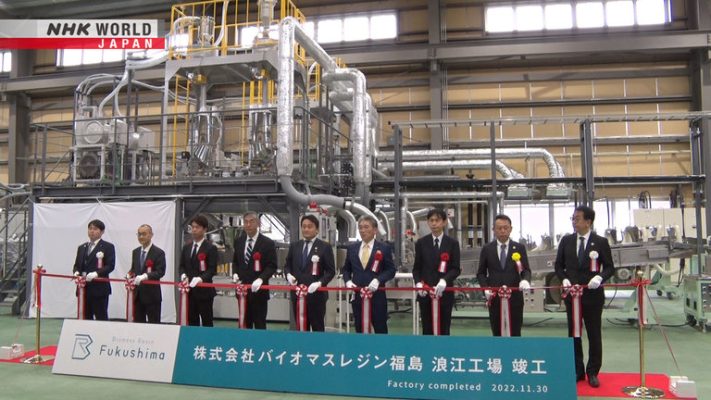No products in the cart.
Plastic News
From Rice to Resin: How One Entrepreneur is Revolutionizing Japan’s Eco-Friendly Plastic Industry
THE SOLUTION TO REDUCE WASTE AND CHANGE THE ECO-FRIENDLY PLASTIC INDUSTRY
The world is facing a serious plastic waste problem. According to a report by the World Economic Forum, by 2050, there could be more plastic in the ocean than fish. This has led to a global push for more sustainable and eco-friendly alternatives to traditional plastics. One innovative entrepreneur, Kamiya Kazuhito, has found a solution to reduce waste and promote environmental sustainability by turning rice into biomass resin, a form of eco-friendly plastic.

As Japanese rice consumption declines, over 420,000 hectares of farmland are left unused. Kamiya saw an opportunity to tackle two problems at once: reducing waste from the rice industry and creating a sustainable alternative to traditional petrochemical plastics. He spent 15 years perfecting a company that uses rice to create biomass resin, a type of plastic that is not only environmentally friendly but also biodegradable.
But Kamiya’s vision didn’t stop there. He wanted to contribute to the recovery of an area devastated by the 2011 Great Earthquake and Tsunami. By utilizing unused farmland in Fukushima Prefecture for large-scale production, Kamiya has not only created job opportunities but also helped support the region’s recovery.
BENEFITS OF KAMIYA’S ECO-FRIENDLY PRODUCTS
The benefits of Kamiya’s eco-friendly product are numerous. First, it reduces waste from the rice industry. The rice plant has several parts that are not typically used for food, including straw and husks. Kamiya’s company uses these parts to create biomass resin, giving them a second life and reducing the amount of agricultural waste.
Second, the production process is more environmentally friendly than traditional petrochemical plastics. Traditional plastics are made from petroleum, a non-renewable resource. The production of petroleum-based plastics requires a significant amount of energy and emits greenhouse gases. In contrast, the production of biomass resin uses renewable resources and emits fewer greenhouse gases, making it a more sustainable alternative.
Finally, the resulting product is biodegradable. Traditional petrochemical plastics can take hundreds of years to break down, contributing to the plastic waste problem. Kamiya’s biomass resin, on the other hand, can break down naturally over time, reducing the amount of plastic waste in the environment.

Kamiya’s company has already gained momentum in the market, serving clients ranging from automobile manufacturers to packaging companies. In the automobile industry, biomass resin can be used in interior components such as door panels, while in the packaging industry, it can be used for food containers and trays. With plans to expand even further and explore new applications for biomass resin, Kamiya’s entrepreneurial venture is a prime example of how innovation can have a positive impact on the environment and society.
The success of Kamiya’s eco-friendly plastic also highlights the importance of sustainable entrepreneurship. Sustainable entrepreneurs prioritize environmental and social impact alongside financial gain. They recognize that they have a responsibility to address pressing environmental issues and make a positive contribution to society.
In addition, Kamiya’s story serves as an inspiration for other entrepreneurs and innovators who are seeking to create more sustainable solutions. His success shows that it is possible to make a positive impact on the environment and society while also running a profitable business.
THE FUTURE OF ECO-FRIENDLY PLASTIC
The growing demand for eco-friendly products and sustainable solutions presents a significant opportunity for entrepreneurs and businesses. Consumers are increasingly conscious of the impact of their purchases on the environment and are seeking more sustainable alternatives. Companies that prioritize sustainability and environmental responsibility can not only meet this demand but also gain a competitive advantage in the market.
In conclusion, Kamiya Kazuhito’s innovative approach to creating eco-friendly plastic from rice is a prime example of how innovation and sustainability can go hand in hand. His vision to reduce waste, promote environmental sustainability, and contribute to the recovery of a devastated region has resulted in a product with numerous benefits.
Source: NHK World
